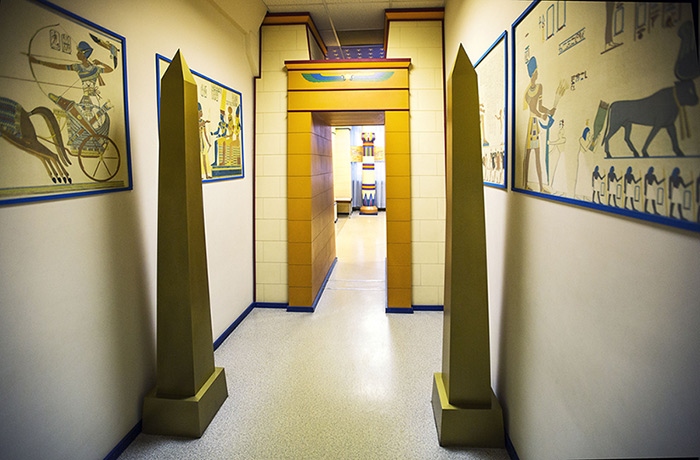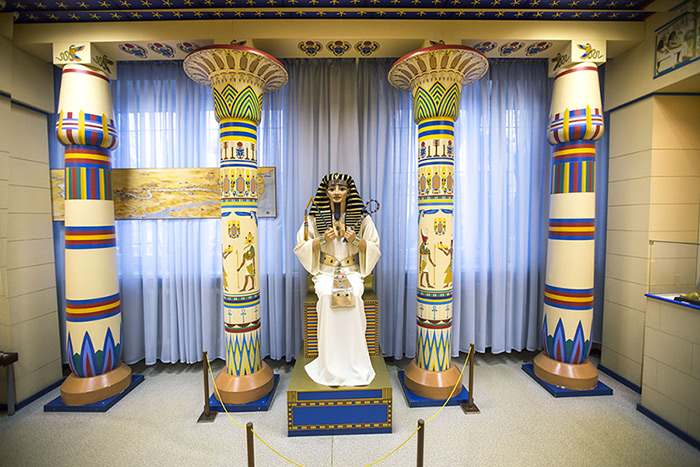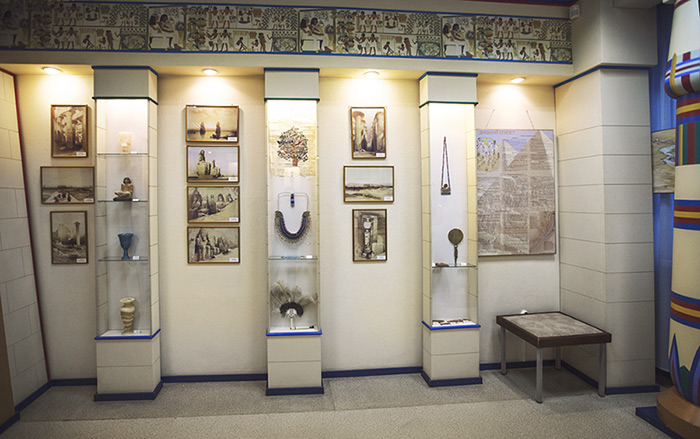Ancient Egypt

The exposition represents the most ancient civilization in the period of its highest flowering. The Nile valley is full of majestic temples, which were the cultural centres of the people who worshiped Ra, the god of the Sun.
The art of Ancient Egypt is a symbolic expression of the people’s view of the world. The Egyptians sought to comprehend the enigmas of nature; everything in it – from its smallest inhabitants to the celestial stars – concealed deep verities inside and subsequently became the clue to the secrets of man and the universe.
The world learned about Ancient Egypt and its culture in the first half of the XIX century thanks to the English artist David Roberts, who depicted the temples and the symbols of the ancient civilization – the Great Sphinx and the Great Pyramids.
In front of the entrance to the temple there was usually an obelisk; its finial symbolized the throne of the god, the universal cause.

In the sanctuary there was a statue of god for which the temple was intended. Egyptians of the era of pharaohs perceived the sculpture alive as if it were the creature which image it embodied, so they wrote the name of the sculptured god onto the statue.
The Egyptians revered hundreds of gods and represented many of them as animals. The god of the Sun, in various images, was considered to be the main god. The image of the god of the Sun – fiery Ra – unites all the ages of the Egyptian civilization. At dawn he was Khepri (also spelt Khepera) – the scarab beetle; in the daytime he became Ra-Horakhty, the mighty falcon soaring high in the sky; as Amon-Ra, he was the king of the gods and defender of the pharaoh in time of war. In the Egyptian mythology, Osiris was revered as the god of productive forces and the Lord of the afterworld. Isis, Osiris’s wife and Horus’s mother, was the goddess of fertility and the symbol of femininity.
The god Toth was represented with the head of the sacred bird Ibis. He revealed to people the secrets of writing by means of hieroglyphs, gave them knowledge of sciences and time, and patronized the scribes. Anubis, a god with a jackal’s head, patronized mummification. Bast, the cat goddess, was considered the patroness of children and the goddess of joy and fun. The goddess Hathor, portrayed as a cow, personified the principles of joy, love, motherhood, and happiness. She was the goddess of music and heaven and the patroness of women. During the cult ceremonies, the priestesses held sistras in their hands, an attribute of Hathor. In the Dendera Temple of Hathor, a zodiac was created. This remarkable specimen of stone carving is an image of the universe in its unceasing movement.
A pharaoh was considered to be an earthly incarnation of Horus, the son of the god of the Sun.

The Egyptians believed in eternal life. The cult of the funerary ceremony was supposed to provide it. The embalmed body-mummy, along with the amulets, was placed in a sarcophagus and then into a tomb. Sacred canopic jars were to be put therein, too. People believed that after the death of the body, the man’s essence, Ka, survives. Ka returns to the divine home – the heavens, while the sculpture of Ka is left in the tomb.
The Egyptians appreciated beauty. They attached great importance to appearance. It is evidenced by many extant combs, mirrors, scissors, and cosmetic items.

